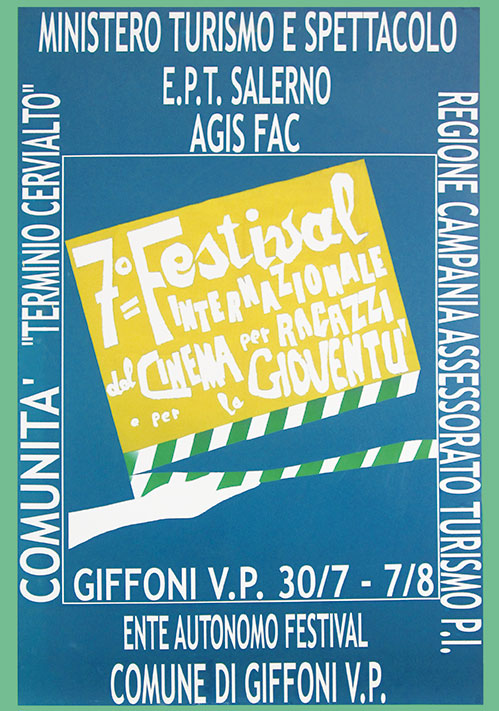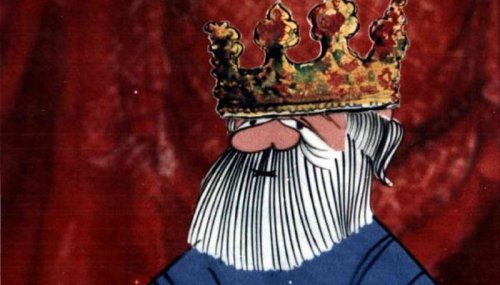Synopsis
Agilulfo is the best of the paladins of Charlemagne. Noble and faithful to duty; in reality it is nothing but an empty armor, held up by its sole will to be and therefore can never abandon its "consciousness of being": if this were to happen, it would cease to exist.
During a march with the army, Charlemagne designates a squire for Agilulfo, Gurdulù, a man "who is there, but who does not know he is there", who will accompany the rider for his adventures. In one night, Agilulfo is also acquainted with Rambaldo, a young knight who joined the army of Charlemagne to avenge his father's death. Rambaldo falls in love with Bradamante, also a champion, but in love with Agilulfo, in which he sees the ideal of the perfect rider.
One evening the knight Torrismondo, annoyed by the cold perfection of Agilulfo, doubts the legitimacy of his investiture as a knight, affirming that Sofronia, the princess saved by the brigands from the knight to become such, was only a servant of the Knights of Valhalla. So the rider is forced to leave, accompanied by Gurdulù, in search of Sofronia, the only one able to prove the regularity of his investiture. The paladin Bradamante tries to follow him, in turn pursued by Rambaldo. Even Torrismondo decides to leave, disgusted by the degradation of the army of Charlemagne, to find the Knights of Valhalla, with whom he grew up and unique considered by him worthy of respect and esteem, from which, however, will in turn be disappointed.
After various vicissitudes for all the seekers, Agilulfo finds Sofronia in Morocco, in the palace of the sultan. Managed to take her away from there, he leads her where he will then meet Charlemagne and hides her for a night in a cave. Here, however, finds Torrismondo, who takes her away with him, having fallen in love with her, so Agilulfo, unable to prove his reason for being a knight, ceases to exist.
Bradamante, due to the despair of having lost his beloved, retires to a convent from which, however, will be taken away by Rambaldo. The latter, clad in Agilulfo's white armor, finally manages to conquer Bradamante's love.

Sections & Films
THE NONEXISTENT KNIGHT
| Original Title | IL CAVALIERE INESISTENTE |
| Italian Title | IL CAVALIERE INESISTENTE |
| Category | Out of competition |
| Section | Review of Children's Movies produced by Istituto Luce (1965-1973) |
| Tipology | Feature Film |
| Duration | 97' |
| Production Year | 1971 |
| Nationality | Italy |
| Directed by | Pino Zac |
| Screenplay | Tommaso Chiaretti, Pino Zac |
| Music | Sergio Battistella, Mario Migliardi |
| Main cast | Stefano Oppedisano, Hana Ruzickova, Evelina Vermigli-Gori |
 PINO ZAC
PINO ZAC
Pino Zac, pseudonym of Giuseppe Zaccaria (Trapani, 23 April 1930), is an Italian draftsman, director and animator.
Born in Trapani from an Apulian father and a mother from Abruzzo, he has always been considered of Pratola Peligna. He studied architecture in Rome but later decided to devote himself completely to illustration. At the age of twenty, in 1950, he created Gatto Filippo, the first comic strip in Italy that developed the themes in a self-contained strip, whose publication lasted until 1958 in the newspaper Sera Paese. As a comic book author he also gained popularity with Kirie eleison and L'Orlando Furioso.
He devoted himself to animated cinema and began working for several newspapers. He collaborates with Mauro Bolognini in 1964, for the realization of two episodes of the film. The woman is a wonderful thing. The following year he proposed the character of Gatto Filippo on film. He co-directs with Franco Rossi "Viaggio di lavoro", an episode of the film Capriccio all'Italiana of 1968 taking care of the animation. In 1970 he shoots with mixed technique The nonexistent knight, taken from the novel of the same name by Italo Calvino. In 1973 Mario Monicelli entrusted him with the part of a penniless left-wing photographer in the film Vogliamo i Colonels.
He collaborates with the French newspapers Le Canard enchaîné, Pilote and L'écho des savanes and founded the magazine Playtime in London. In the seventies, in the Eureka magazine directed by Luciano Secchi, he first proposed the comic version of Orlando Furioso and then the strip "Kirie & Leison", which has as its protagonist a devil and a priest and who ironic about the historic compromise between communists and Democrats.
In 1975 he created the series of engravings "La comédie de l'art" at the printing school of Gerardo Lo Russo and founded the satirical newspaper "Quaderni del Sale".




